What’s Next for Yogurt: A Global Review
November 13, 2017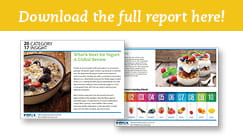
Thanks to an increased health perception in a convenient package, the global yogurt market is growing at a moderate rate. The global low-fat yogurt market is anticipated to reach more than 28 billion by 2025, according to Grand View Research, Inc. Meanwhile, however, the Greek yogurt market in the U.S. is cooling off, with all eyes searching for the next big innovation. Adding to the complexity, yogurt is in fact a truly global food, with the top markets spanning four different continents.
We’re taking a deep dive into the growth areas and opportunities in the category, from the flavor gaps in drinkable yogurt, to opportunity in mousse applications, unique flavor pairings, water buffalo milk varieties, consumer health motivations, to the top claims in both dairy and non-dairy varieties, plus much more.
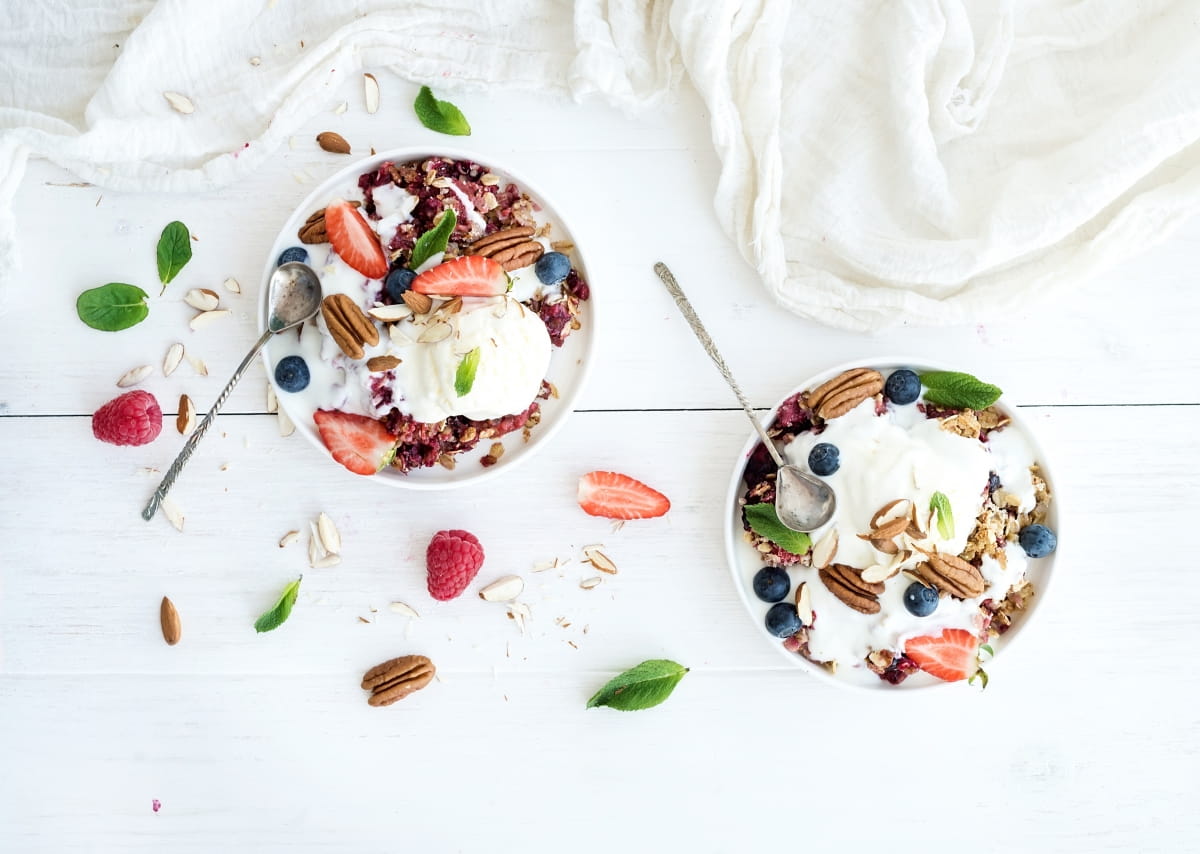
Flavors
Plain and Vanilla are the only varieties in the top 10 to grow over the time period. Vanilla launches increased 30% (141 to 184). If we look at individual flavor components, Banana (630) and Passionfruit/Maracuja (586) shot into 8th and 9th place, respectively. Passionfruit is often paired with flavors such as Peach, Mango, Raspberry, Kiwi, Coconut, Papaya, Açai, Blood Orange and Guava. Over this time period it has been most popular in Germany, UK and France,with increasing interest in Spain, Netherlands and Norway.
Top Flavors
• Plain
• Strawberry
• Vanilla
• Blueberry
• Peach
• Raspberry
• Mango
• Cherry
• Apricot
• Lemon
Drinkable Yogurt Needs Flavor Focus
While the category seems to have a lot going for it with fermentation, convenience and functional properties, drinkable yogurts only account for 10% of yogurt sales in the US. Mintel’s research shows consumers rate drinkable yogurt below spoonable yogurt in key attributes such as “tasty,” “exciting,” “fun” and “indulgent treat,” which is also strongly related to taste. The gap is largest for “tasty.” Brands might be focusing more on functional benefits and lagging behind on the flavor innovation, in addition to possible texture issues for US consumers. As we know, flavor is always key, but especially so in categories like this where consumers still have a lack of familiarity, so flavor innovation and consumer education are important for category growth.
Products of Note
• Arla Vanilla Skyr Drinking Yogurt is free from added sugars and contains artificial sweeteners. The Team Denmark recommended product contains 0.1% fat, is high in protein, and features the Farmer Owned logo. Denmark 2017
• Terun Cooked Full-Fat Yogurt is halal certified. This product retails in a pack containing 8 units. China September 2017
• Brooklea Light Greek Style Layered Peach & Passion Fruit Yogurt is fat free Greek style yogurt with a layer of peach and passion fruit compote with sugar and sweetener. The product contains 83 calories per pot and is made with British milk. It is free from artificial colors, flavorings or preservatives. UK September 2017
More product intros to check out in our full report! Click here!
Interesting Flavor Combinations - Products of Note
• Danone Actimel Lime, Ginger & Yuzu Flavored Drinking Yogurt contains 2% milk fat, L. casei, and vitamins B6 and D, which support the immune system. Germany 2017
• Mila Mango, Maracuja and Kiwi Full Fat Yogurt is formulated with 100% milk from the South Tyrol region, from cows that are taken care by farm members, and are fed only with 100% GMO-free feed. The product contains no added preservatives, gluten and GMO ingredients, and retails in a 250g recyclable pack that contains two 125g units. Italy September 2017
• Kroger Greek Pineapple Kiwi with a Hint of Spinach Nonfat Yogurt Smoothie contains other natural flavors, prebiotics, probiotics and vitamins A and D. This product is free from gluten, provides 18g protein, and retails in a 10-fl. oz. recyclable pack. USA September 2017
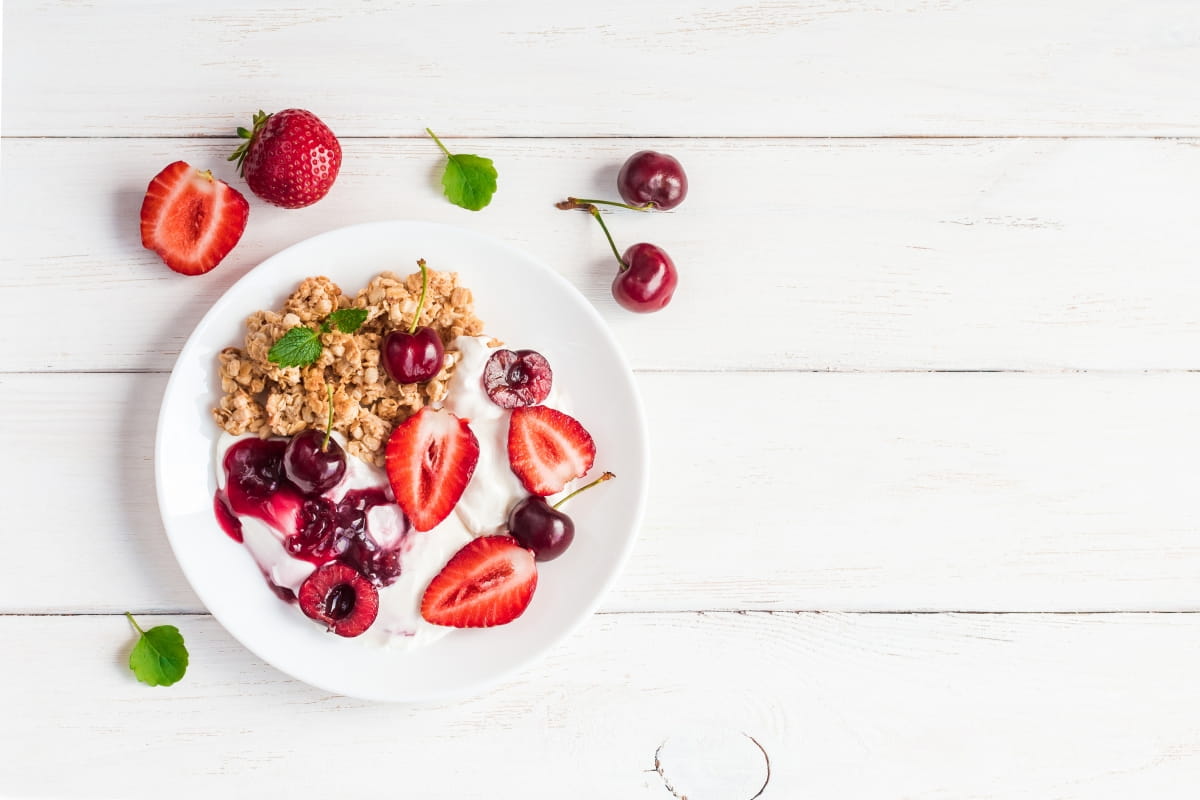
Healthy Messaging
“It is critical for brands to nail the message around yogurt’s natural health benefits,” says Mintel analyst Caroline Roux, “particularly with youngsters who have always been exposed to dairy-free products.”
In Germany, Italy and Poland, around a third of consumers eat/drink yogurt for breakfast, as an accompaniment to cereals or fruits, or on its own. In the US, 93% of yogurt consumers eat it for breakfast, including 29% on a daily basis.
Consumers continue to look for products that provide health & wellness benefits, but the focus on yogurt’s digestive and protein benefits has slipped. And while oats are trendy, Mintel research shows yogurt brands that incorporate oats aren’t promoting their health benefits as much as other food products do. For example, only 1% claim heart health versus 6% of other food products containing oats. And only 2% claim fiber versus one-fifth of other products.
There’s also room to innovate around yogurt-based breakfast options. Consumers are looking for breakfast foods that are tasty (of course), nutritious, filling, quick to prepare, and that provide energy. However, few yogurts positioned as breakfast products are particularly high in energy and/or protein. When we look at drinking and spoonable yogurts featuring the word “breakfast” in their description and launched globally in the last three years, the average calorie count for 100 grams of product was just under 100 and the average protein content was 4.2 grams.
Many more details in our full report, including a look at overnight oats and traceability.
Ingredient Spotlight: Water Buffalo Milk
Water buffalo milk and products made from it are prized for their creaminess. Best known as the ingredient in Italian buffalo mozzarella, the milk contains 8.5% butterfat, compared with 3 to 3.5% in cow’s milk, and it has 40% more protein than cow’s milk. It is also reported that consumers with lactose issues can better tolerate water buffalo milk.
Yogurt made from water buffalo milk is as thick as Greek yogurt without straining, leading manufacturers like Ithaca Water Buffalo in New York to promote a product that is “the most natural yogurt” they can make, without thickeners and a “complicated mechanical process.” The result, the company says, is “zero waste, and 100% natural, thick yet creamy yogurt, that is smooth and not sour or containing the high acidity of Greek yogurt.”
They also claim it takes 3 cows to make the same amount of yogurt as one water buffalo, making their product better for the environment. Mintel only noted 2 buffalo milk yogurts in the world in 2013, but that number rose to 14 by 2015 and there were 11 as of September 2017. Chile, Romania and Turkey are the top 3 producers, with Turkey and Switzerland showing a recent rise in interest.
Spotted:
• Norman, a Brooklyn cafe from Scandinavian chefs Fredrik Berselius and Claus Meyer, opened this spring with buffalo milk yogurt with rhubarb preserves and sunflower seed granola on its menu.
• Auberge du Soleil, a fine dining restaurant in Napa Valley, CA, offers a dessert featuring lemon-flavored buffalo milk gelato, Suncrest peaches, Japanese beignets and Italian Amaretti cookies.
• ME Water Buffalo Co. in Appleton, ME, sells buffalo milk yogurt and gelato at farmers’ markets in the area.
Products of Note
• Bufala Organic Plain Buffalo Yogurt is said to be an extraordinary, creamy yogurt specialty. The company supports the Pro Natura project to introduce young buffalo into protected nature reserves in Reusstal. Switzerland September 2017
• Transilvania Lactate Greek Yogurt is made with 100% buffalo milk, and has 10% fat. It is organic and free from gluten. The manufacturer claims to be responsible and involved in environment conservation. Romania September 2017
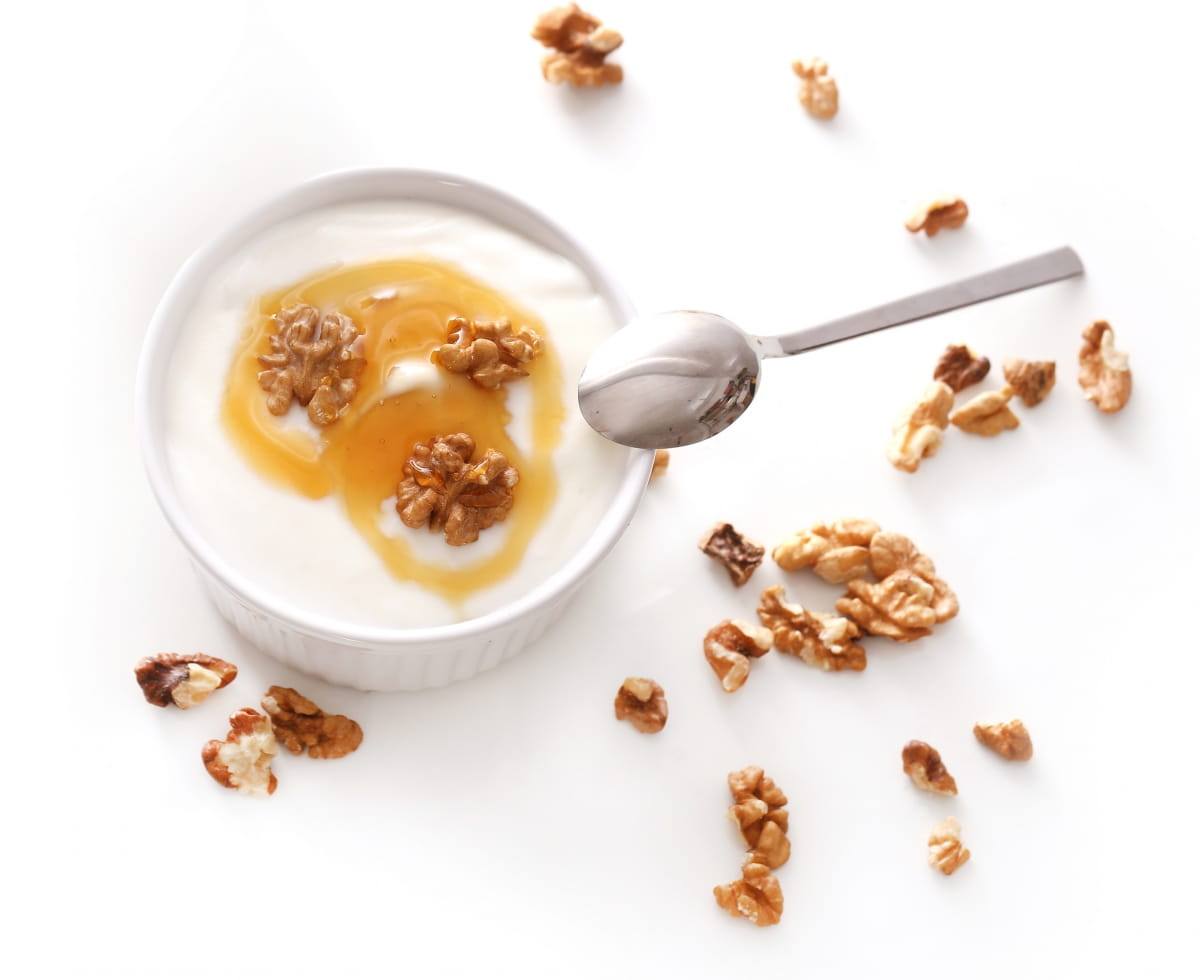
Top Claims
•43% of US buyers eat yogurt/yogurt drink for digestive health and 41% for the protein
Brands are pushing their natural credentials with claims such as No Additives/Preservatives, which is the third most popular claim, Hormone Free (+43% for this time period), GMO-free (+42%) and organic (+25%). Protein claims - that largely contributed to the success of Greek yogurt - now play a minor role in the marketing of new yogurt. According to Mintel, in the 12 months to June 2017, less than 5% of new yogurt launches featured a high protein claim, compared to 15% three years earlier.
Dannon’s launch of a line of Non-GMO Project yogurts brought criticism from the National Milk Producers Federation, who ran an ad campaign against such labeling of dairy products, saying it was “deceptive” and “fear-based marketing.” Dannon spokesman Michael Neuwirth explained the company wasn’t necessarily opposed to GMO ingredients, and that the changes were driven by consumer demand “for natural and sustainable eating options.” “Consumers can go to the store and make choices based on their preferences, not ours.” he said.
Spotted:
Hiday Farms in Burlington, MI, a small, family-run farm, produces thick and creamy, plain-flavored, organic yogurt made from milk from grass-fed cows. It’s available in a handful of stores in eastern Michigan and receives customer comments such as: “Creamy and a farm fresh flavor. The yogurt I’ve been searching for! Thank you for providing a healthier alternative to mass produced yogurt.”
Top 10 Claims
• Low/no/Reduced Fat
• Low/no/reduced Allergen
• No Additives/Preservatives
• Gluen-free
• Ethical: environmentally friendly package
• Organic
• Kosher
• Social Media
• Vegetarian
• Low/No/Reduced Sugar
Check out the full report for many more details, including the full-scoop on plant-based and non-dairy yogurt.
Launches/Countries
• About 37% of the U.S. population purchases yogurt
Technavio reports the global yogurt market is currently growing at a moderate rate because of increased awareness about yogurt’s nutritional benefits and increasing consumer demand for convenience foods that are also healthy. A recent report by Grand View Research agrees, stating yogurt’s health benefits and the increase in organic offerings are set to boost industry growth. Technavio also shows India and China poised to boost the yogurt category due to “growing urbanization and GDP, the rise in middle-class population, and the increase in disposable incomes.”
In the United States, after years of fast growth, US sales of yogurt have softened. The Greek yogurt boom is fading, and Mintel quotes Chobani founder Hamdi Ulukaya as saying his company needs to step up and deliver what consumers of traditional yogurt are looking for, since they are unsatisfied and leaving the category: “Last year alone, nearly two million households left (the yogurt category) because they could not find options that were right for them—namely a product that’s affordable, has less sugar and is made with only natural ingredients.”
China is the largest yogurt market in volume. In the past five years, the Chinese yogurt market saw a compound annual growth rate (CAGR) of 24% in value, while the US grew 6%. In mature European markets, consumption is declining slowly, due to fiercer competition coming from other food and drink categories. France, Italy, Spain, Switzerland and Poland have all posted zero to negative CAGR in both value and volume in the past five years. In Germany, the third largest market in volume globally, the recent increase in consumption and average retail price have contributed to a market turnaround.
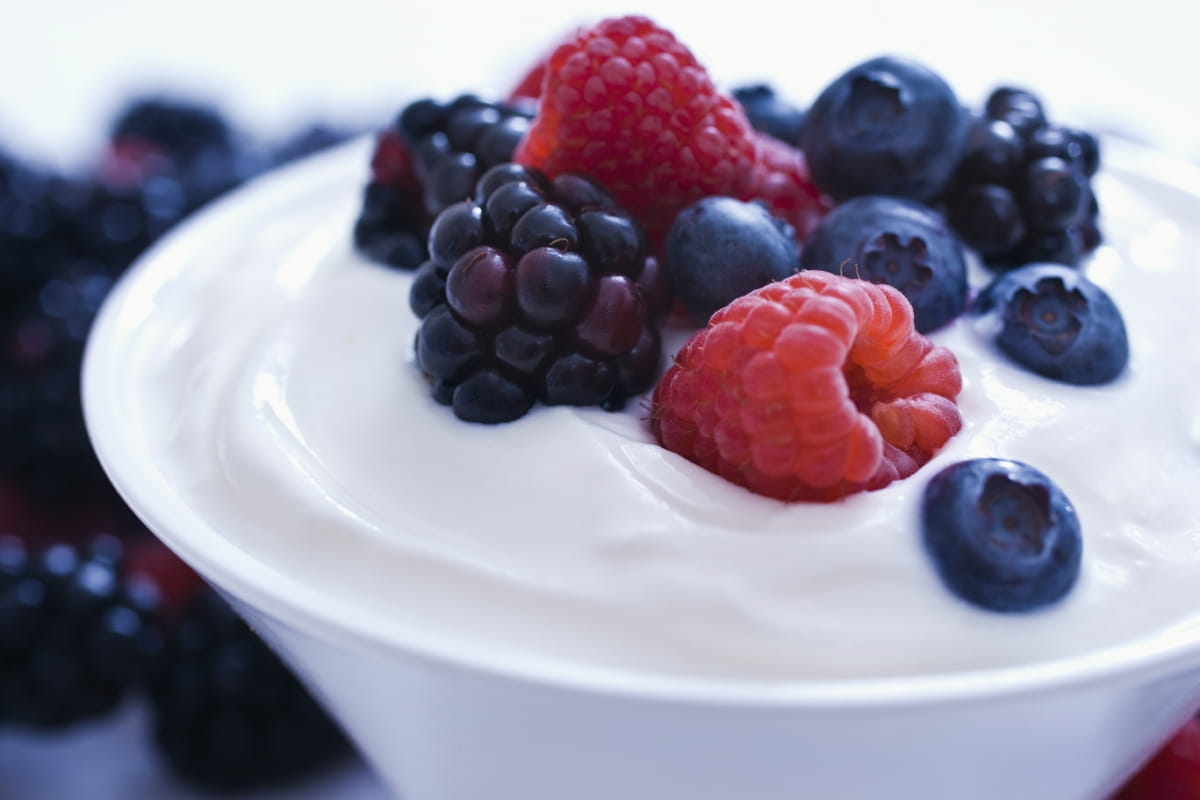
Top markets
1. China
2. U.S.
3. Germany
4. Brazil
5. France
Conclusion
The consumer demand of recent years was healthy options in convenient formats to be incorporated into their daily routine. Yogurt have worked -- and continue to work -- on meeting those innovation demands through increased protein, lowered sugar, organic ingredients and on-the-go packaging. Plant-based yogurts are increasing with bases expanding beyond soy as non-dairy products go mainstream. Health and convenience factors such as these will drive growth in the future. India and China are also poised to boost the yogurt category as their middle-class populations and incomes rise.

FONA CAN HELP!
Let FONA’s market insight and research experts translate these trends into product category ideas for your brand. They can help you with concept and flavor pipeline development, ideation, consumer studies and white space analysis to pinpoint opportunities in the market.
Our flavor and product development experts are also at your service to help meet the labeling and flavor profile needs for your products to capitalize on this consumer trend. We understand how to mesh the complexities of flavor with your brand development, technical requirements and regulatory needs to deliver a complete taste solution. From concept to manufacturing, we’re here every step of the way.
Contact our Sales Service Department at 630.578.8600 to request a flavor sample or visit www.mccormickfona.com.



